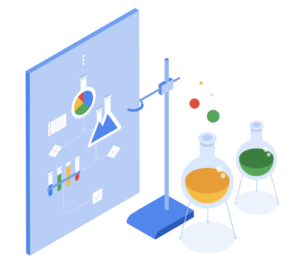This article is part two (see part one) of a three-part series of articles exploring the findings of a Google-sponsored report, “The Resilience Formula: Overlaying Agility and Cost Optimisation” based on a survey that was carried out between August and October of 2020. The qualitative survey was fielded to 300 senior IT decision-makers at a variety of companies from a range of industries spread throughout the following European countries: United Kingdom (UK), Republic of Ireland (ROI), DACH (Germany (D), Austria (A), Switzerland (CH)), France, the Nordics (Denmark, Finland, Iceland, Sweden, Norway), and Southern Europe (Italy, Spain). Google Workspace is a comprehensive business productivity solution consisting of communication tools such as Gmail (email), Google Meet (video conferencing), and chat; collaboration tools such as Docs (text documents), Sheets (spreadsheets), and Slides (presentations); and Drive (cloud storage); and overarching administration with device management and other security features.
“If true resilience is made up of two core components – cost optimisation and agility – then prioritising one over the other would lead to gaps in companies’ resilience planning. Interestingly, IT leaders across all sectors ranked their organisations lower across cost optimisation metrics than agility-based metrics. Why?”
Chapter 5 of Google’s recently sponsored report, “The Resilience Formula” should give pause to any and all IT leaders regardless of the size or their organizations. Would the opening statement of this article mean that organizations are better at, or prefer, addressing issues of agility vs. cost optimization? Or that the challenges of cost optimization are in greater focus and scrutiny by IT leaders?
“These results may suggest that many of the companies surveyed are deep into the cost optimisation stage, delving into tangible metrics and outcomes, and auditing processes to shave down their operating margins. CIOs and IT decision makers are aware of the challenges of cost optimisation, and are scoring themselves realistically.”
Additionally, the concept of “agility” is more difficult to define. How does one quantify ideas such as collaboration and openness? The survey results seem to suggest that many companies find it easier to define and thus tackle cost optimisation issues and as a result, those are set as the priorities. 88% of survey respondents indicated that cost optimisation would enable their company to be more resilient.
Of those surveyed, with organizations that have more than half of their employees making use of Google Workspace, 90% agreed that the productivity tools they are using (i.e. Google Workspace) have improved the overall agility of the organization. However, only 67% of those using a different productivity and collaboration tool indicated they saw this improvement.
As part of this equation, the research indicates that agility scores jumped higher the longer an organisation has been using Google Workspace, particularly in the range of 6 to 12 months. Both elements of agility and cost optimisation must be addressed for businesses to remain resilient. Nothing like a global pandemic to bring that to the forefront.
Next Steps
Part three, “A Resilient Future” is the final article in our series that examines the relationship between agility and cost optimization presented in the Google-sponsored survey, “The Resilience Formula: Overlaying Agility and Cost Optimisation” which was carried out between August and October of 2020.
Further Reading
- Part one: Why organizational resilience matters – Insights from a study by Google
- Google Cloud: The role of technology in environmental sustainability and why it matters.
- 5 Core business benefits of Google Workspace
- Google Workspace: Digital transformation during a pandemic
- Google's 5 Tips for disconnecting in an always-on world




